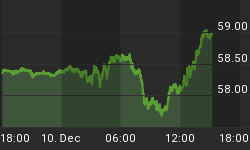In the panic following the 1929 stock market crash, bank runs led to bank balance sheet contractions and bank failures, which led to money supply contraction and by definition, deflation. "Trust" had become a fleeting ideal in the early 1930's, and the suspension of the gold standard during WWI was a fresh memory. Americans of that era learned rather quickly that the maintenance of wealth in tangible form was preferable to paper wealth, so as bank runs became more pronounced, they rushed into and hoarded gold, since a growing distrust of banks meant an equal distrust of paper money.
Executive Order 6102 of April, 1933 and the United States Gold Reserve Act of January, 1934 changed all that. The 1934 Act raised the official price of gold to 35$ per ounce from the 20.67$ paid to Americans who, under the threat of a 10,000$ fine and/or 10 years imprisonment, had been forced to turn in their gold a few months earlier.
In a deflation, or money supply contraction, the dollars that remain have increased purchasing power because there are fewer of them around. Where debt is involved, however, the pre-deflation debt levels remain just as high, fostering a dangerous balance sheet environment for any country. A deflation during such a dangerous environment, therefore, cannot be viewed as a positive development for any paper currency, or for any promises to pay that paper currency in the future.
What we learned from the early 1930's experience, as noted above, was that deflation ultimately led to dollar devaluation, and a commensurate gold price appreciation as well as positive inflation after 1933; practically overnight deflation became inflation as the purchasing power of the dollar had fallen while that of gold did not.
Holding gold is protection or insurance against government's proclivity to debase its currency, not strengthen it. It is protection against a depreciating currency, not an appreciating one. Granted, where there are assurances that the future value or purchasing power of a currency will not decline, there is no reason to hold gold. Should a deflation accompany such a utopian scenario, gold's nominal price should fall, as people would want to hold onto those remaining dollar bills with both hands, to quote Robert Prechter.
The main reason for holding gold during a deflation, in our view, would be to avoid trying to finesse on timing the expected future debasement of the currency. It also insures against a potential collapse of the foreign exchange value of a currency where a deflationary depression brings about a default, or fear of a default, of a country's debts. A resulting price collapse in those securities due to a panic might by definition be deflationary, but we would be hard pressed to argue that such an outcome would be a positive thing for a nation's currency.
Perhaps that is the reason gold bullion has held up in price better than any other asset of late, and why we have seen the physical shortages and premiums that we have. The inflation that is on the way, and perhaps worse, is apparently so clear to those buyers that they would rather get both hands on all the physical gold they can find today, and pay dearly for the privilege.
For some additional background, the following is taken from a Ben Bernanke 2002 speech titled "Deflation: Making Sure "It" Doesn't Happen Here." Straight from our Federal Reserve Chairman's lips, if all else fails!
Although a policy of intervening to affect the exchange value of the dollar is nowhere on the horizon today, it's worth noting that there have been times when exchange rate policy has been an effective weapon against deflation. A striking example from U.S. history is Franklin Roosevelt's 40 percent devaluation of the dollar against gold in 1933-34, enforced by a program of gold purchases and domestic money creation. The devaluation and the rapid increase in money supply it permitted ended the U.S. deflation remarkably quickly. Indeed, consumer price inflation in the United States, year on year, went from -10.3 percent in 1932 to -5.1 percent in 1933 to 3.4 percent in 1934.17 The economy grew strongly, and by the way, 1934 was one of the best years of the century for the stock market. If nothing else, the episode illustrates that monetary actions can have powerful effects on the economy, even when the nominal interest rate is at or near zero, as was the case at the time of Roosevelt's devaluation.
Lastly, we keep reading and hearing that the decoupling theory is dead, and based on the collapses of world bourses, those who argued the theory was nothing but a fantasy have been patting themselves on the back.
The decoupling theory held that emerging economies around the world, particularly in China, had developed to the point where they no longer depended on the US for growth, and that increased domestic consumption would replace lost US exports if the US entered recession. Faith in the theory had generated strong outperformance of foreign stocks compared to US markets.
The decoupling theory as far as we were concerned was prefaced on the removal of currency pegs, as there can be no decoupling where countries continued to throw good money after bad. Those countries, now dealing with the losses generated by their foolish attempts to prop up the US economy, are paying a steep price. It remains to be seen what happens from here, although it is hard to imagine a worse predicament had they moved in the direction that many of the decoupling advocates had long suggested.
















